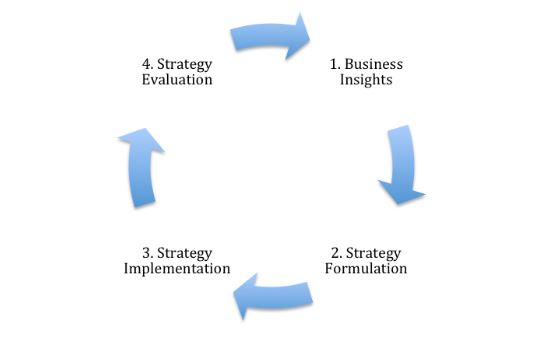Firms often hire strategy consultants to move their organizations forward. But what happens when strategy consultants leave? The outlooks isn’t good.
According to a 2009 study by McKinsey, roughly 70% of organizations fall short of their goals while implementing key strategic initiatives.
Many B2B startups tackle management tools, including Podio and Zendesk. But few address the specific problem of change management, and the correct implementation of a strategy once it has been recommended.
Enter FIBRES™, a strategy management tool that setting out to address this problem. It is an offshoot of Necorpoint, a Finnish market foresight and strategy management company, that saw a vacuum for a product that would help implement their advice, long after they had made their recommendations
Recommendation does not always lead to execution
Panu Kause, who heads both these entities says, “We’ve seen strategies that never get executed and on the other hand we’ve seen development projects yelling for concrete strategic guidance. In our executive, managerial and supporting positions we have repeatedly seen this leading to instances of strategic misalignments, organizational inefficiencies, unwanted bottlenecks and lost opportunities.”
Panu, an entrepreneur and earlier corporate executive, has specialized in his field for over 20 years, and even coaches at Aalto University’s business school.
Why strategies fail
The flowchart below visualizes the process of strategy implementation in organizations. While the chart is quite simple to understand, there is no dearth of factors due to which strategy implementation could go wrong.
These factors include rapidly changing business landscape, organizational structure and culture, leadership, resources (time, competence, capital), and communication. Even something as simple as an employee taking maternity leave can impact how a strategy is carried out.
And being responsive to change is essential.
“Rapidly moving ‘disruptiveø start-ups are born to make established businesses obsolete if those established businesses themselves are not keen on renewal,” says Panu.
FIBRES™ addresses these issues by giving organizations a framework for efficient strategic implementation.
Strategy management through big data
There are two components to FIBRES™: a market foresight tool and a strategy management tool. The market intelligence tool has the ability to gather data algorithmically and generate insights out of it.
This data is typically updates about what’s happening in the industry, trends, competitor behavior, regulatory updates etc. It is also a channel for FIBRES™ to publish more customized analyst insights for organizations that have signed up for the same. This gives organizations the ability to act rapidly to changing business landscapes, or at least ideate on the same.
The strategy management tool is aimed at creating a constant feedback loop across hierarchies, that can be executed upon collaboratively. By forcing a continuous discussion, Panu hopes the strategy can be both better understood, and acted upon.
“Continuous discussion concerning market insights and ideas, strategies and objectives, and day-to-day activities is scattered over time and across different tools. Such a discussion does not result in new, shared understanding in the most productive manner”.
The platform also includes a market foresight tool, which draws on their own analysis and crowdsourced data.
Intent matters most
For FIBRES to work, management still has to be using the tool with the right intent. Implementing strategy and executing it is in itself hard enough, and to do the same without a structured approach is comparable to navigating through dark waters without a map or a compass.
“Often the linkage between strategic targets, operational tasks, and continuous change in the surrounding world just are not aligned together. In our executive, managerial, and supporting positions we have repeatedly seen this leading to misunderstandings, inefficiencies, and lost opportunities at best, and in actual chaos at worst,” says Panu.
“We are not saying a tool such as FIBRES solves all the above problems. However, we do believe a real-time working environment specifically targeted for these needs will certainly help in building transparency, discussion, and shared understanding throughout an organization.”
 Nordic Startup News Early Stage Startup News From The Nordics
Nordic Startup News Early Stage Startup News From The Nordics



